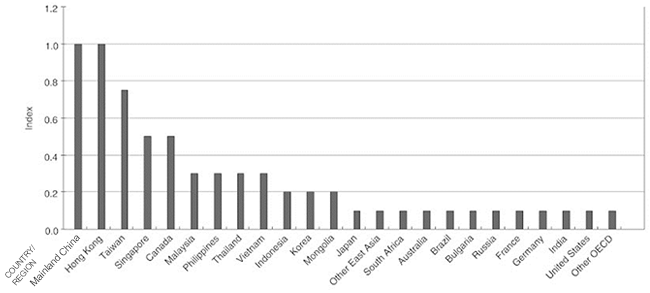Monitors Economic Impact to Exhibition Industry
DALLAS, 3 February 2020 – The Center for Exhibition Industry Research (CEIR) has been closely monitoring the effect of the coronavirus outbreak and its economic impact to the exhibition industry.
“We could use the impact of SARS (Severe Acute Respiratory Syndrome) as a guide to access the impact of coronavirus on the Chinese and the U.S. economies,” noted CEIR Economist Allen Shaw, Ph.D., Chief Economist for Global Economic Consulting Associates, Inc.
The World Health Organization (WHO) reports that from 1 November 2002 to 31 July 2003, there were 5,327 probable cases of SARS in mainland China. Worldwide, in just six months, there were more than 8,000 infected individuals, with over 700 deaths (almost 9% of infected cases). In comparison, according to the John Hopkins University’s CSSE (Center for Systems Science and Engineering), as of 12:15 pm EST on 3 February 2020, there were 17,308 and 17,491 confirmed cases in mainland China and the world, respectively. The death toll in mainland China was 361 (2.1 % of infected case).
While the death rate is smaller, the spread of coronavirus is far quicker and bigger than SARS. It took less than one month for the number of cases to climb above 5,000, compared to six months for SARS. This may be, in large part, attributable to the timing of the coronavirus outbreak, which occurred during the heavy travel season of the Chinese New Year. During the outbreak, families reduced their demand for food, clothing, travel and entertainment, and the numbers of guests in hotels declined sharply. Thus, SARS had a large impact on tourism and its related industries as well as retail sales.
McKibbin and Lee (Estimating the Global Economic Costs of SARS, in Learning from SARS: Preparing for the Next Disease Outbreak: Workshop Summary, National Academies Press, 2004) constructed an index of “global exposure to SARS” as shown in Figure 1. This index can be used to access the country’s and regions’ risk shocks on other countries. For example, if the impact on mainland China is 2 percentage points and country/region A has an index of 0.5, the country/region risk premium shock will be the Chinese shock of 2% adjusted by the “global exposure to SARS” index, which gives a shock of 1 percentage point. Empirical studies indicated that the impact of SARS on Chinese GDP was about 1 percentage point.
Figure 1: Global Exposure Index to SARS

Based on: Jong-Wha Lee and Warwick J. McKibbin, Estimating the Global Economic Costs of SARS.
It is too early to give a precise estimate on the impact of coronavirus as the Federal Reserve Chairman Powell indicated “the situation is really in its early stages, and it’s very uncertain about how far it will spread and what the macroeconomic effects will be in China and its immediate trading partners and neighbors and around the world.”
Thus far, coronavirus cases have outpaced SARS. However, the Chinese authorities have taken more decisive measures to combat the spread of the virus. Furthermore, many Chinese firms have ordered their employees to work from home. Those preventive measures plus the popularity of internet shopping should mitigate some of the negative impact. Nonetheless, it is believed that the impact on the Chinese economy will be about the same as that of SARS (about 1 percentage point) unless the spread continues well beyond mid-February. The bulk of the impact would occur during the first quarter of 2020 with a sharp drop off in the second quarter and some rebound during the second half of the year.
Using the McKibbin and Lee’s index of “global exposure to SARS,” the impact on the U.S. GDP is about 0.1 percentage point. However, the impact on the U.S. exhibition industry will be larger than that of the GDP since the impact of a decline in overseas travel on exhibitions is bigger than the GDP. That said, we don’t have data on the distribution of exhibitors, attendees and sponsorship revenues by countries to give a quantitative estimate.
“CEIR is closely monitoring the latest coronavirus developments and following the recommendations made by the U.S. Travel Association,” said CEIR CEO Cathy Breden, CMP, CAE, CEM.
About CEIR
The Center for Exhibition Industry Research (CEIR) is a 501(c)3 nonprofit foundation whose mission is to advance the growth, awareness and value of exhibitions and other face-to-face marketing events by producing and delivering knowledge-based research tools that enable stakeholder organizations to enhance their ability to meet current and emerging customer needs, improve their business performance and strengthen their competitive position. For additional information, visit www.ceir.org.
###
Media Inquiries:
Mary Tucker
+1(972) 687-9226
mtucker@ceir.org